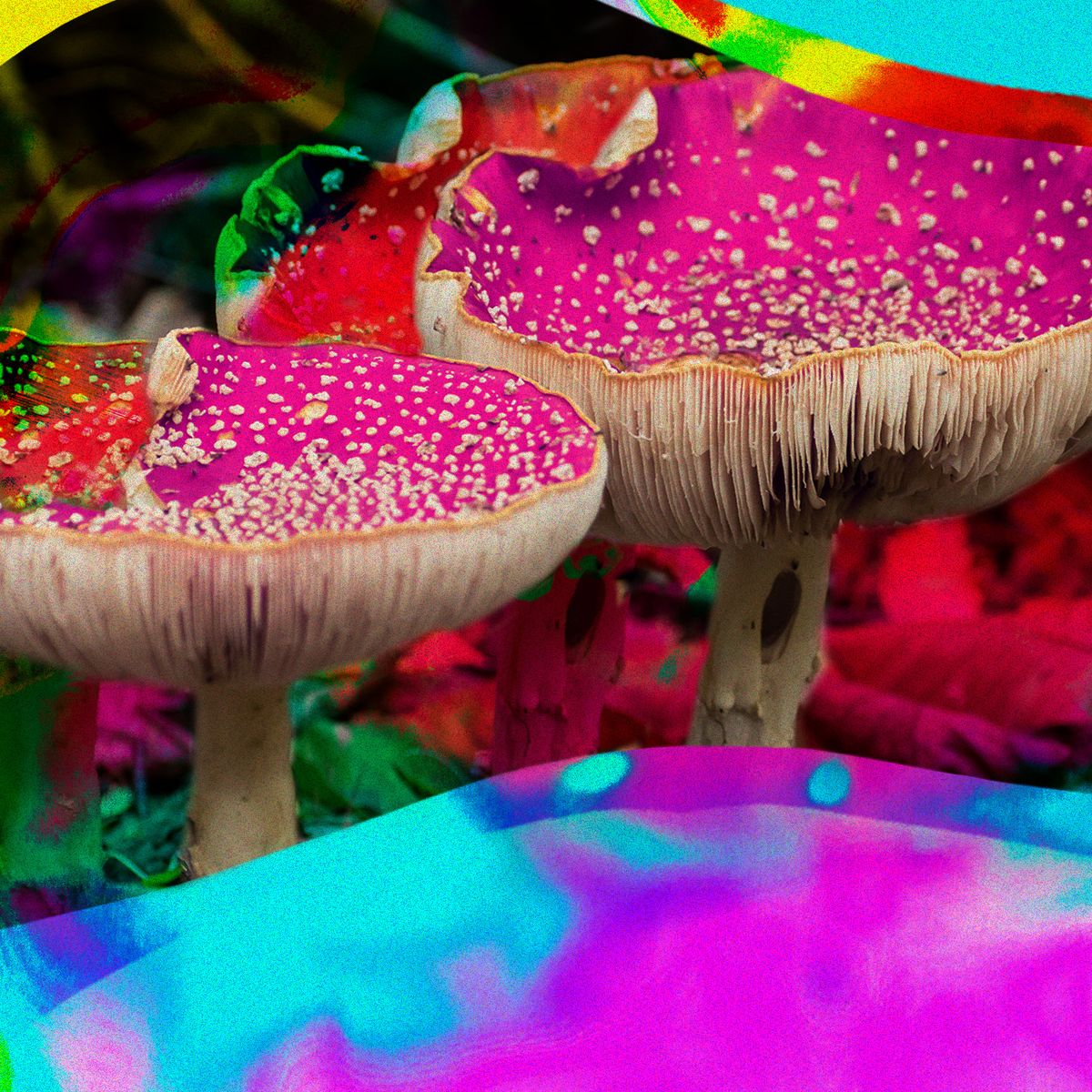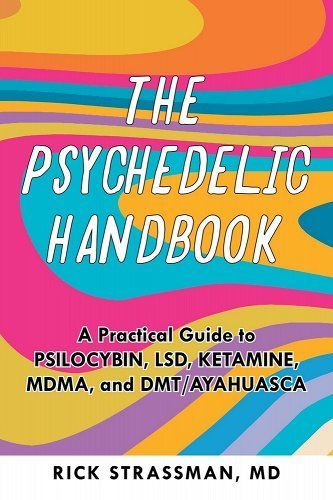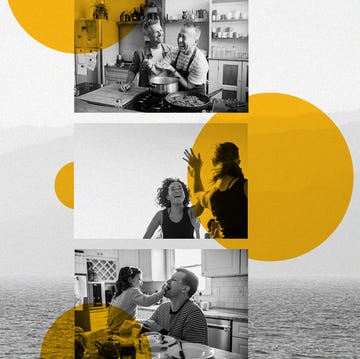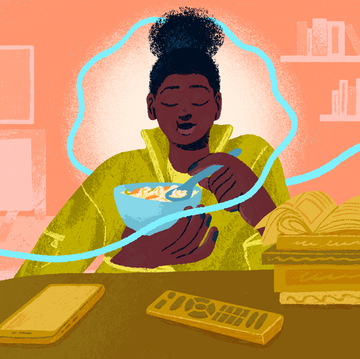Theodora Blanchfield had been hospitalized twice and tried nearly a dozen medications to ease her depression when her psychiatrist suggested she consider ketamine. The short-acting hallucinogen popularly used as a club drug and legally used as an anesthetic was approved to treat major depressive disorder in 2019. Blanchfield received her first ketamine infusion that same year. Almost instantly, it was like “cataract surgery for the brain,” she says. “Everything feels a little bit brighter.”
The writer and associate marriage and family therapist has been taking monthly doses of the drug ever since, and she says integrating ketamine into her mental health therapy has been key to managing her treatment-resistant depression. “I really can’t talk about it without superlatives,” Blanchfield says. “I feel like it gave me my life back.”
In recent years, using psychedelic drugs to support mental health has become a hot topic in the media and among medical professionals. A number of recent documentaries, including Michael Pollan’s recently released Netflix series How to Change Your Mind, explore the mental health benefits of psychedelics. There are stories about microdosing moms using mushrooms to ease parenting stress, new certificate programs to educate therapists, and an explosion of start-ups ready to meet the anticipated appetite.
There’s also been a resurgence of scientific exploration into these drugs, decades after the government made such research all but impossible by classifying LSD, psilocybin, MDMA, and other psychedelics as Schedule I substances with no accepted medical use. Attempts to decriminalize psychedelics are growing. Ketamine can now be legally prescribed. Blanchfield, for example, takes her monthly dose through prescription lozenges. Several cities, including Denver; Seattle; Oakland, California; and Washington, D.C., decriminalized psilocybin, and Oregon became the first state to both decriminalize and legalize it for therapeutic use.
While many people in the mental health community are excited about the potential benefit of psychedelics, these are powerful substances that must be used with care, according to psychiatrist and The Psychedelic Handbook author Rick Strassman. “It’s not risk-free, and it’s not a panacea,” he says. “There’s a lot more to it than just dropping acid and hoping for a mystical experience that will turn your life around.”
What are psychedelics?
Whether organic or synthetic, psychedelics “affect every aspect of human consciousness,” Strassman writes in his book, including “perception, body awareness, emotions, thinking, and sense of self.”
Psychedelic plants such as the peyote cactus, which contains mescaline, have been vital to Indigenous cultures for centuries. Other naturally occurring psychedelics include psilocybin, found in stuff like “magic mushrooms,” as well as ayahuasca, a drink brewed from psychoactive plants, and “toad venom,” a hallucinogenic compound produced by the Sonoran desert toad. Meanwhile, synthetic psychedelics, made by chemists in a lab, include ketamine, LSD, and MDMA, also known as ecstasy.
Psychedelics act on both the brain and the mind. Chemically, they affect how the brain operates by altering neurotransmitter levels. Psychedelics also produce mental experiences that can feel otherworldly. People taking these drugs may hallucinate and feel a heightened sense of perception as though they can see trees breathing, for instance. They may feel like they’re having a different relationship with time, their own body, and place in the universe. Blanchfield recalls that during one of her ketamine infusions, she asked the attending nurse, “Do I exist?”
It’s not only this mind-opening effect that makes psychedelics so potentially powerful therapeutically, but research shows these drugs stimulate nerve growth and neural connections, making it easier for the brain to escape old patterns and form new ones. “I think the combination of psychotherapy plus the drug,” Strassman notes, “will be more helpful than either alone.”
Can psychedelics help mental health?
Combining therapy with psychedelics is producing remarkable results in studies using MDMA to treat post-traumatic stress disorder, according to Multidisciplinary Association for Psychedelic Studies founder and executive director Rick Doblin, who has spent his career studying and advocating for the therapeutic use of psychedelic drugs. The psychologist established his organization in 1986 to support research into therapeutic applications of drugs like LSD, MDMA, and ayahuasca.
Doblin anticipates MDMA will receive FDA approval as a treatment for PTSD in the next year based on the results of a study demonstrating either total resolution or significant reduction of PTSD symptoms in volunteers who received MDMA in conjunction with therapy. These volunteers — veterans and sexual assault survivors who suffered chronic, severe PTSD for an average of 14 years — underwent three MDMA treatments and 12 therapy sessions, while a control group received therapy but no drug. Two-thirds of study participants who received MDMA no longer qualified as having PTSD, compared to the 32 percent who received therapy alone.
“The MDMA makes the therapy more effective,” Doblin says, “and the therapy helps people to confront things inside them that have been difficult for them before.” He adds that MDMA is also being studied as a potential treatment for social anxiety as well as eating and alcohol-use disorders. In 2018, the FDA named psilocybin a “breakthrough therapy” for treating severe depression, which could speed its path to approval and availability. Clinical trials are currently ongoing.
How does a psychedelic therapeutic session feel?
Unlike taking mushrooms with buddies at Burning Man, psychedelic-therapy sessions are highly controlled and closely monitored. In Doblin’s study, for instance, each participant taking MDMA was accompanied by two clinicians during the eight-hour experience. Strassman, who has studied psilocybin and DMT, the active compound in ayahuasca and “toad venom,” says it’s common for volunteers in psychedelic studies to take the drug in a clinic’s living room-like setting, wearing eyeshades and headphones with music, accompanied by one or two therapists.
Blanchfield says she Googled for “ketamine playlists” to listen to during her 40-minute infusion sessions, during which she relaxed in a recliner and donned shades. “Once the ketamine starts working, I don’t even feel like I’m in a chair anymore,” she says. “Sometimes, I feel like I’m lying down. Once it starts working — I know all of this is so weird as it comes out of my mouth — but when it starts working, I feel like I’m on Space Mountain, and I’m being sucked back through this tube into this universe.”
The experience isn’t always pleasant. “There have been sessions where I thought I died, and I saw things like myself in a body bag in the morgue,” says Blanchfield, who has smoked marijuana but never recreationally taken psychedelics. “There have been sessions that have been incredibly dark. It’s not the happy serum. Yes, I feel better, but it’s still a medical treatment.” She often unpacks these sessions with her therapist or journals and meditates on the experience.
What is the future of psychedelic-aided therapy?
One reason doctors and patients are so enthusiastic about the therapeutic potential of psychedelics is that the drugs currently used to treat the most common mental illnesses — anxiety disorders, depression, and post-traumatic stress disorder — are only about 20 percent more effective than a placebo. They often come with unwelcome side effects, including weight gain and loss of libido.
Andrew Weil, an integrative medicine doctor, said during a recent online summit about psychedelic therapy that psychiatry, as it’s now practiced, “has come to rely entirely on medications, which are just not very good.” He added, “I think the results that can be obtained with psychedelic-assisted therapy are much better.”
However, access remains difficult. No standard protocol exists for psychedelic-assisted therapy, Strassman notes, and thousands of doctors and therapists need to be trained to administer it. The University of California Berkeley Center for the Science of Psychedelics launched its certificate program in psychedelic facilitation in September.
“Up in Oregon, you need a high school diploma to apply to be a psilocybin certified facilitator, which isn’t especially reassuring,” Strassman says. “We need to be prepared. Academics need to be prepared.”
Ketamine clinics have popped up in cities across the country since the drug was approved in 2019, but not all of them include follow-up sessions with therapists. Unless a patient has been accepted into a clinical trial — or is a resident of Oregon — there’s not yet a legal method to experience psychedelic-assisted therapy with psilocybin, MDMA, or other such drugs.
Strassman acknowledges that he is concerned that increased accessibility to psychedelic drugs could lead to the kind of reckless use and adverse outcomes that prompted the government to shut down research in the 1960s. He still believes these substances hold promise for mental health treatment and advises those interested in psychedelic-assisted therapy to “be skeptical and hopeful at the same time about the potential but also the risks.”
For Blanchfield, she credits ketamine with providing her the stability that she needed to progress through graduate school. Now, she’s working as a therapist and plans to pursue training to facilitate ketamine treatment for others. “I’ve tried so many medications,” she says. “I went to six weeks of inpatient treatment. There’s so much more hope and treatment than there has been in such a long time.”
Sandy Cohen is a Southern California-based health and wellness coach, host of the Inner Peace to Go podcast, and writer of the Shondaland series A Path to Well-Being. Follow her on Twitter @YouKnowSandy.
Get Shondaland directly in your inbox: SUBSCRIBE TODAY

















